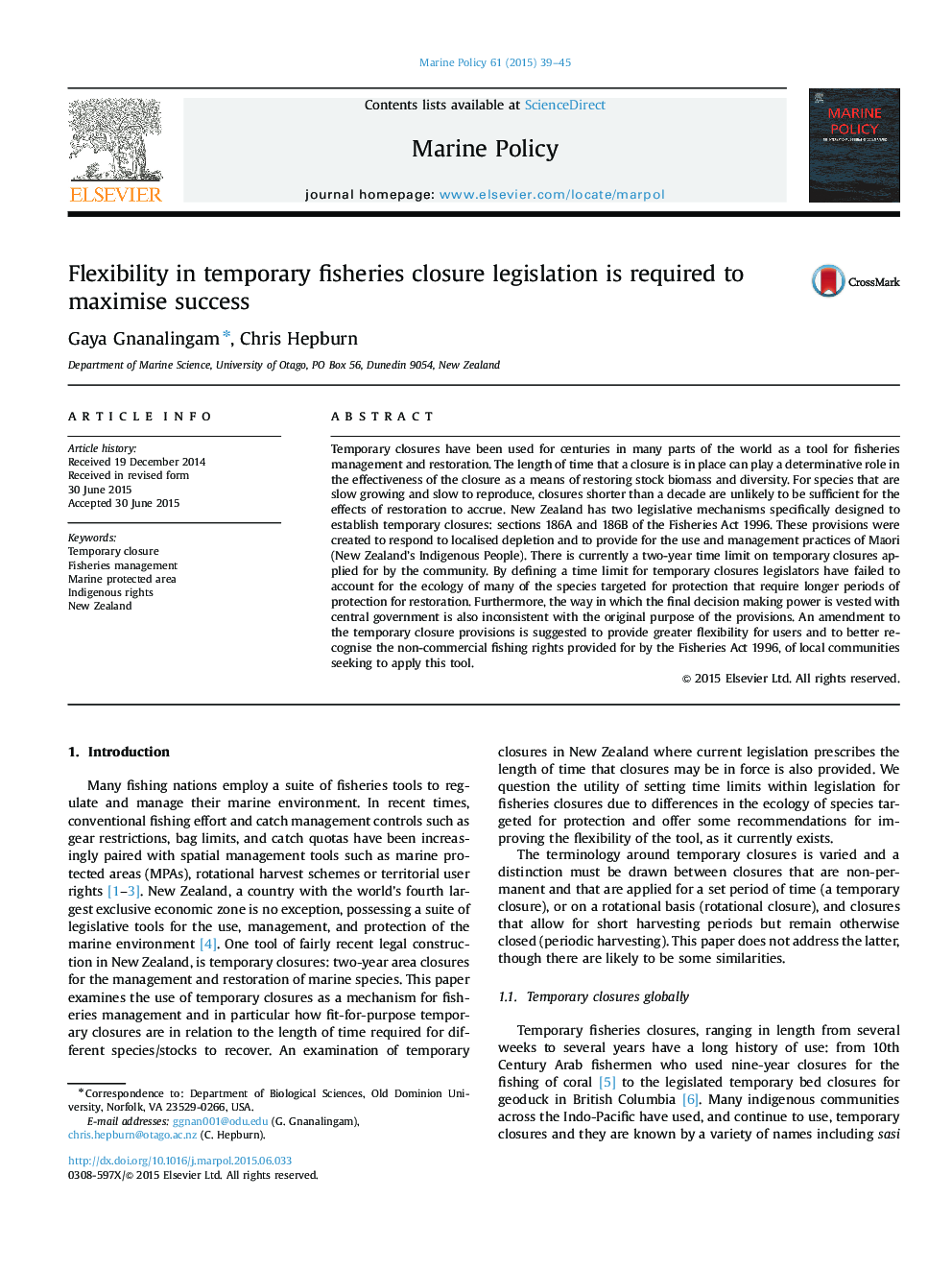| کد مقاله | کد نشریه | سال انتشار | مقاله انگلیسی | نسخه تمام متن |
|---|---|---|---|---|
| 7489795 | 1485518 | 2015 | 7 صفحه PDF | دانلود رایگان |
عنوان انگلیسی مقاله ISI
Flexibility in temporary fisheries closure legislation is required to maximise success
ترجمه فارسی عنوان
برای به حداکثر رساندن موفقیت، لازم است که انعطاف پذیری در قانون بسته شدن موقت ماهیانه لازم باشد
دانلود مقاله + سفارش ترجمه
دانلود مقاله ISI انگلیسی
رایگان برای ایرانیان
کلمات کلیدی
بستن موقت، مدیریت شیلات، منطقه حفاظت شده دریایی، حقوق بومی، نیوزلند،
موضوعات مرتبط
مهندسی و علوم پایه
سایر رشته های مهندسی
مهندسی دریا (اقیانوس)
چکیده انگلیسی
Temporary closures have been used for centuries in many parts of the world as a tool for fisheries management and restoration. The length of time that a closure is in place can play a determinative role in the effectiveness of the closure as a means of restoring stock biomass and diversity. For species that are slow growing and slow to reproduce, closures shorter than a decade are unlikely to be sufficient for the effects of restoration to accrue. New Zealand has two legislative mechanisms specifically designed to establish temporary closures: sections 186A and 186B of the Fisheries Act 1996. These provisions were created to respond to localised depletion and to provide for the use and management practices of MÄori (New Zealand's Indigenous People). There is currently a two-year time limit on temporary closures applied for by the community. By defining a time limit for temporary closures legislators have failed to account for the ecology of many of the species targeted for protection that require longer periods of protection for restoration. Furthermore, the way in which the final decision making power is vested with central government is also inconsistent with the original purpose of the provisions. An amendment to the temporary closure provisions is suggested to provide greater flexibility for users and to better recognise the non-commercial fishing rights provided for by the Fisheries Act 1996, of local communities seeking to apply this tool.
ناشر
Database: Elsevier - ScienceDirect (ساینس دایرکت)
Journal: Marine Policy - Volume 61, November 2015, Pages 39-45
Journal: Marine Policy - Volume 61, November 2015, Pages 39-45
نویسندگان
Gaya Gnanalingam, Chris Hepburn,
